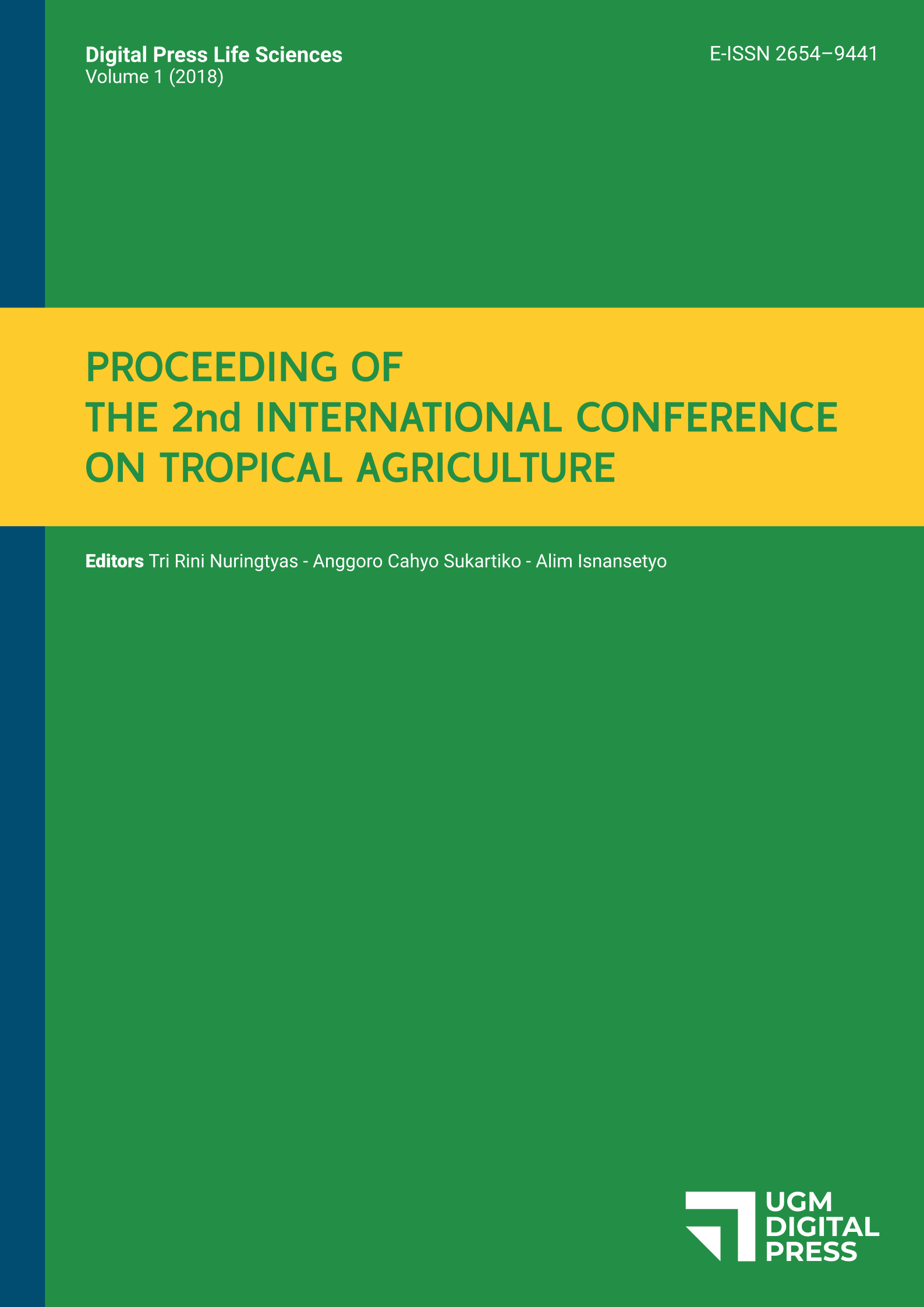The effect of ethepon treatment on the formation of flower in melon (Cucumis melo L.)
Budi Setiadi Daryono
, Eko Prasetya
, Sumarlina
, Dian Sartika
, Aprilia Sufi Subiastuti
Laboratory of Genetics and Breeding, Faculty of Biology, Universitas Gadjah Mada Teknika Selatan Street, Sekip Utara, Yogyakarta 55281, Indonesia
bs_daryono@mail.ugm.ac.id
Abstract
Melon is a potential horticultural crop which the production is increased significantly each year in
Indonesia. However, a melon plant that has been widely developed in Indonesia
faced a problem due to the high tropical temperature that affected the fall of
flower causing failure in fruit production. In addition, the variation of sex
expression in melon flower is important for genetic analysis and breeding
programs. Ethepon is one of plant chemical growth regulator that is known to
change the sex expression of the plant by increasing the number of female
flower in monoecious plant especially Cucurbitaceae. This research aimed to
analyze the effect of ethepon treatment
on the sex determination of melon flower. This study was conducted by 3 stages
treatment of ethepon during March – July
2014, namely when 2, 5, and 7 weeks after planting. Split-plot design has been
used with the main plots were arranged in a completely randomized design by
cultivating different melon cultivars i.e: Melodi Gama 1, Melodi Gama 3,
Bartek, and PI 371795. The data were analyzed by F-test and Duncan Multiple
Range Test (DMRT) with significance level at 5 % using software SAS 9.3. The
result showed that ethepon treatment
affected the formation of melon flower by increasing the number of female or
hermaphrodite flower and decreasing the number of male flowers, especially in
the concentration of 75 ppm and 100 ppm but with different responses by
different cultivar.
Keywords
ethepon, flower formation, sex expression, melon, plant breeding
References
bs_daryono@mail.ugm.ac.id
Abstract
Melon is a potential horticultural crop which the production is increased significantly each year in
Indonesia. However, a melon plant that has been widely developed in Indonesia
faced a problem due to the high tropical temperature that affected the fall of
flower causing failure in fruit production. In addition, the variation of sex
expression in melon flower is important for genetic analysis and breeding
programs. Ethepon is one of plant chemical growth regulator that is known to
change the sex expression of the plant by increasing the number of female
flower in monoecious plant especially Cucurbitaceae. This research aimed to
analyze the effect of ethepon treatment
on the sex determination of melon flower. This study was conducted by 3 stages
treatment of ethepon during March – July
2014, namely when 2, 5, and 7 weeks after planting. Split-plot design has been
used with the main plots were arranged in a completely randomized design by
cultivating different melon cultivars i.e: Melodi Gama 1, Melodi Gama 3,
Bartek, and PI 371795. The data were analyzed by F-test and Duncan Multiple
Range Test (DMRT) with significance level at 5 % using software SAS 9.3. The
result showed that ethepon treatment
affected the formation of melon flower by increasing the number of female or
hermaphrodite flower and decreasing the number of male flowers, especially in
the concentration of 75 ppm and 100 ppm but with different responses by
different cultivar.

